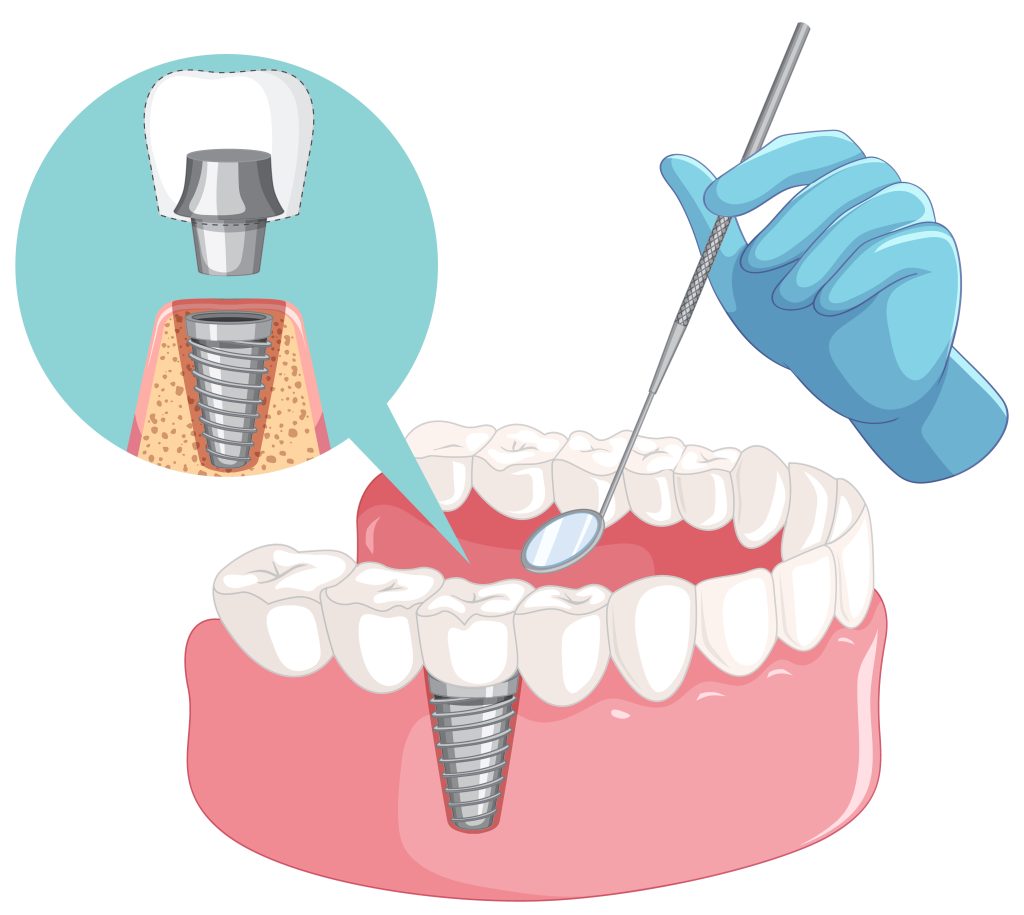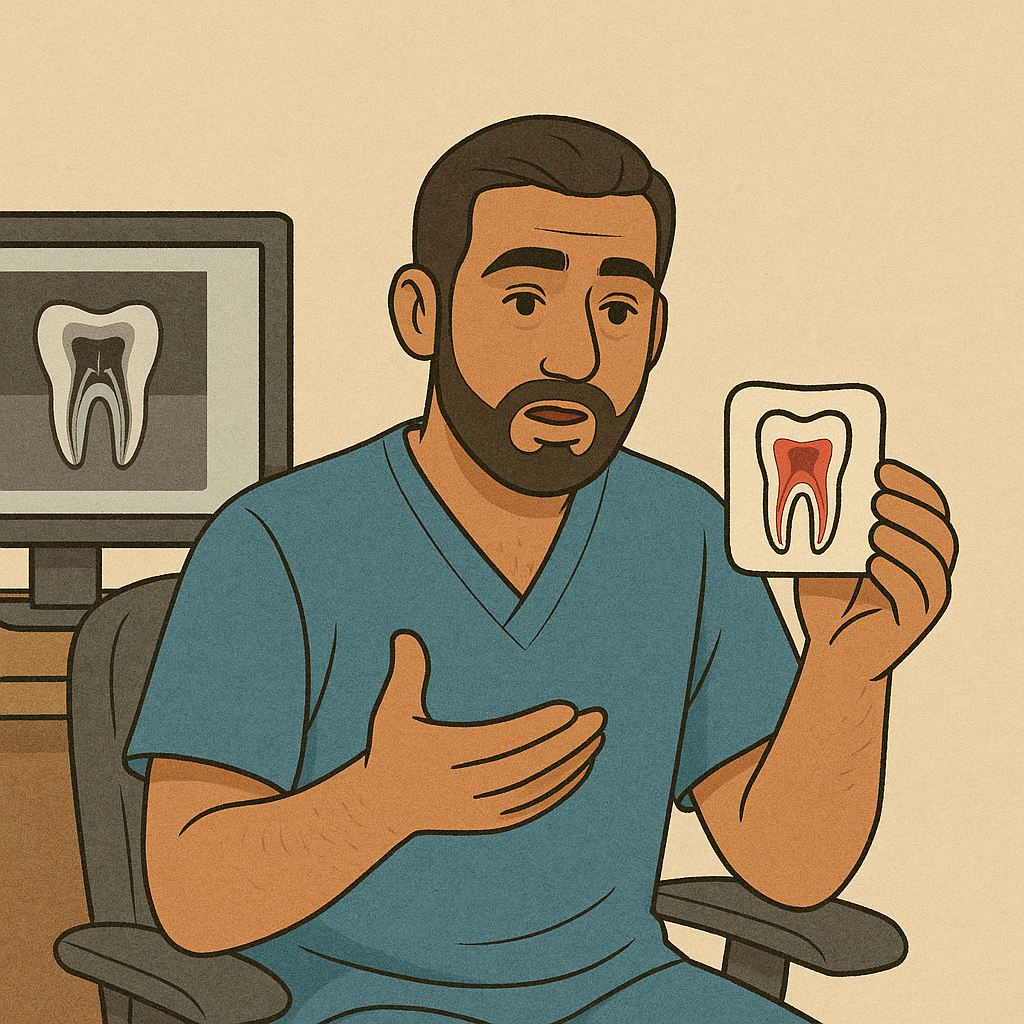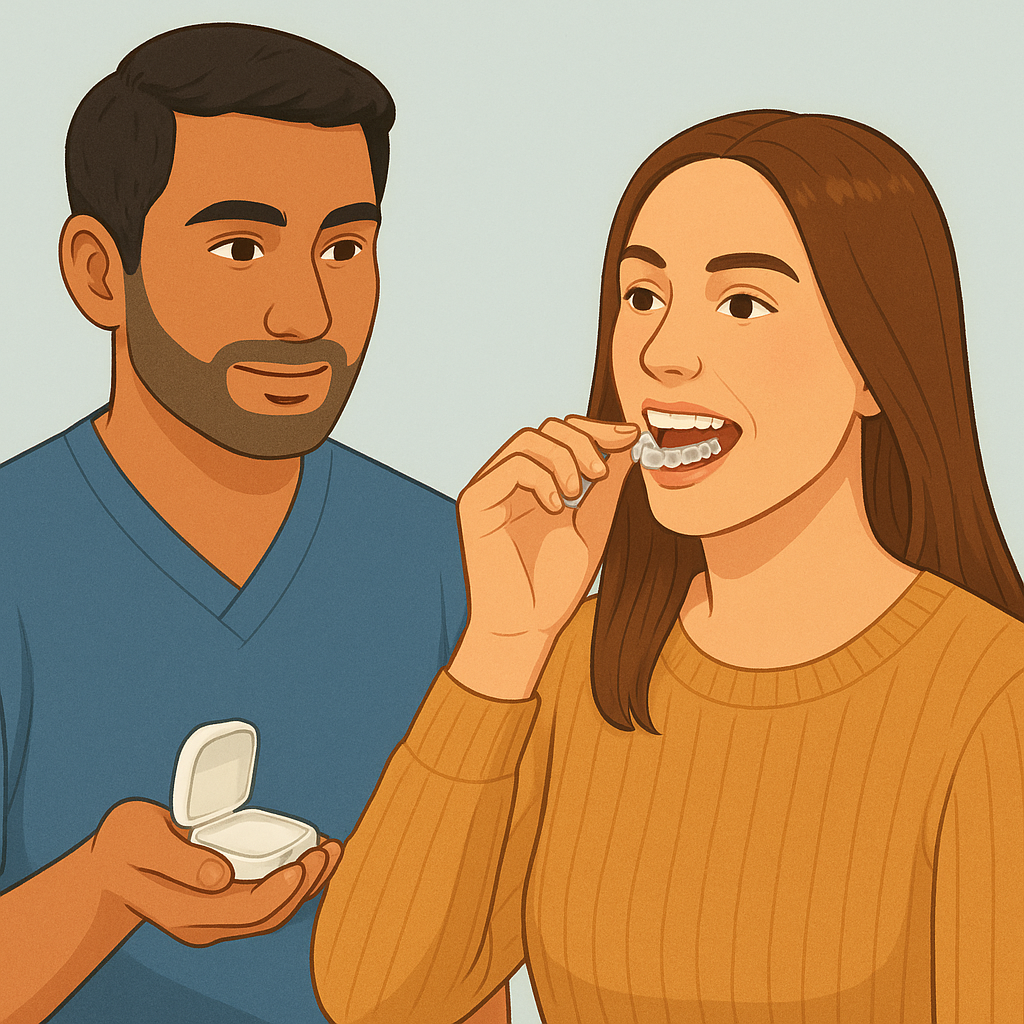Diagnosis and Treatment of Temporomandibular Joint (TMJ) Disorders
Causes of TMJ Disorders
- Jaw Injury or Trauma – Accidents or blows to the face can damage the jaw joint.
- Arthritis – Conditions such as osteoarthritis or rheumatoid arthritis can lead to TMJ dysfunction.
- Bruxism (Teeth Grinding) – Excessive clenching or grinding puts pressure on the TMJ.
- Bite Misalignment – Poor occlusion (how teeth fit together) may contribute to TMJ issues.
- Stress and Muscle Tension – Emotional stress can cause jaw clenching, leading to strain on the TMJ.
- Joint Dislocation or Disc Problems – Displacement of the cushioning disc within the joint can cause pain and restricted movement.
Common Symptoms of TMJ Disorders
- Jaw Pain or Tenderness – Pain in one or both sides of the jaw, often worsening with movement.
- Clicking, Popping, or Grinding Sounds – Noises when opening or closing the mouth.
- Difficulty Chewing or Biting – Discomfort while eating due to restricted jaw movement.
- Locking of the Jaw – Episodes where the jaw gets stuck in an open or closed position.
- Facial Pain and Headaches – Pain extending to the temples, neck, or shoulders.
- Ear-Related Symptoms – Ringing in the ears (tinnitus) or a feeling of fullness in the ear.
Diagnosing TMJ Disorders
1. Clinical Examination
- The dentist or specialist assesses jaw movement, listens for clicking sounds, and checks for tenderness.
- Muscle tension and bite alignment are evaluated.
2. Imaging Tests
- X-rays – Provide a basic view of the jawbone and joint alignment.
- MRI (Magnetic Resonance Imaging) – Assesses soft tissues, including the disc inside the joint.
- CT Scan (Computed Tomography) – Offers detailed images of the bone structure of the TMJ.
Treatment Options for TMJ Disorders
1. Conservative (Non-Surgical) Treatments
- Lifestyle Modifications – Reducing stress, avoiding excessive chewing, and maintaining good posture.
- Oral Splints or Mouthguards – Custom-fitted appliances help relieve pressure and prevent teeth grinding.
- Physical Therapy – Jaw exercises and stretching improve mobility and reduce tension.
- Medications – Anti-inflammatory drugs, muscle relaxants, or pain relievers help manage discomfort.
- Hot and Cold Therapy – Alternating warm and cold packs can reduce inflammation and pain.
2. Minimally Invasive Procedures
- Botox Injections – Used to relax tense jaw muscles and alleviate TMJ pain.
- Corticosteroid Injections – Reduce inflammation within the joint.
- Arthrocentesis – A minimally invasive procedure that flushes out excess fluid and debris from the TMJ.
3. Surgical Treatments (For Severe Cases)
- Arthroscopy – A small camera is inserted into the joint to diagnose and treat structural issues.
- Open-Joint Surgery – A last-resort option for repairing or replacing damaged joint components.
- Orthodontic or Bite Correction Treatments – Braces, clear aligners, or dental adjustments may be necessary to improve jaw alignment.
What to Expect During TMJ Treatment
- Gradual Improvement – Many non-surgical treatments provide relief within a few weeks to months.
- Regular Follow-Ups – Monitoring progress helps adjust treatment plans as needed.
- Potential Lifestyle Changes – Managing stress, avoiding hard foods, and improving posture may be necessary for long-term relief.
Preventing TMJ Disorders
- Practice Good Jaw Habits – Avoid excessive gum chewing and clenching.
- Manage Stress – Relaxation techniques can prevent unconscious jaw tension.
- Maintain Proper Posture – Keeping the head aligned helps reduce strain on the jaw muscles.
- Use a Nightguard If Needed – Prevents teeth grinding and protects the TMJ during sleep.
- Seek Early Treatment for Bite Problems – Addressing misalignment early can prevent worsening TMJ issues.
When to Contact a Dentist or Specialist
Seek professional evaluation if you experience:
- Persistent jaw pain or stiffness.
- Difficulty opening or closing your mouth.
- Frequent headaches, ear pain, or facial discomfort.
- Clicking, popping, or locking of the jaw that interferes with normal function.
Conclusion
TMJ disorders can significantly impact daily life, but with early diagnosis and proper treatment, most cases can be effectively managed. If you are experiencing jaw pain or related symptoms, consult a dentist or TMJ specialist to determine the best treatment plan for your needs.




















